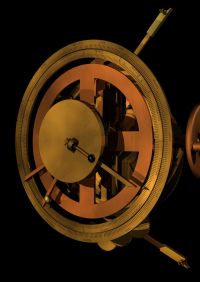Audition dates for Brigadoon have been posted on the Lyric Light Opera of the Northwest website. Performances will be in July 2007 at McIntyre Hall (Mount Vernon, WA) and September 2007 at Kirkland Performance Center (Kirkland, WA). Rehearsals will probably not start until April so if you’re commmitted to a show now please consider auditioning.
World Rap Championships Finals – trailer
US wins World Rap Championship in October 2006, Las Vegas, NV. Shout out to the RapDogs crew.
Greeks Build First Computer in 3rd Century BC
 Antikythera page for related discussions.
Antikythera page for related discussions.
The ancient Greeks had built an analog computer in the 3rd century BC. Many agree that for a thousand years afterward no mechanical device was built more sophisticated than this. The destruction of the Library of Alexandria is also still a hot topic with debates about who was responsible, and how much it’s destruction contributed to the Dark Ages and the apparent halt of scientific discovery. Read background on the Wikipedia Byzantine Empire.
This discovery was made back in 1902. In 2006 new x-ray studies revealed increased sophistication of the device and more text on the outer casing available for translation.
An ancient astronomical calculator, built around the end of the second century BC, was unexpectedly sophisticated, a study in this week’s Nature suggests. Mike G. Edmunds and colleagues used imaging and high-resolution X-ray tomography to study fragments of the Antikythera Mechanism, a bronze mechanical analog computer thought to calculate astronomical positions.
The Greek device contains a complicated arrangement of at least 30 precision, hand-cut bronze gears housed inside a wooden case covered in inscriptions. But the device is fragmented, so its specific functions have remained controversial. The team were able to reconstruct the gear function and double the number of deciphered inscriptions on the computer’s casing. The device, they say, is technically more complex than any known device for at least a millennium afterwards. The text is astronomical with many numbers that could be related to planetary motions, and the gears are a mechanical representation of a second century theory that explained the irregularities of the Moon’s motion across the sky caused by its elliptical orbit.
Antikythera Greek Mechanism Page